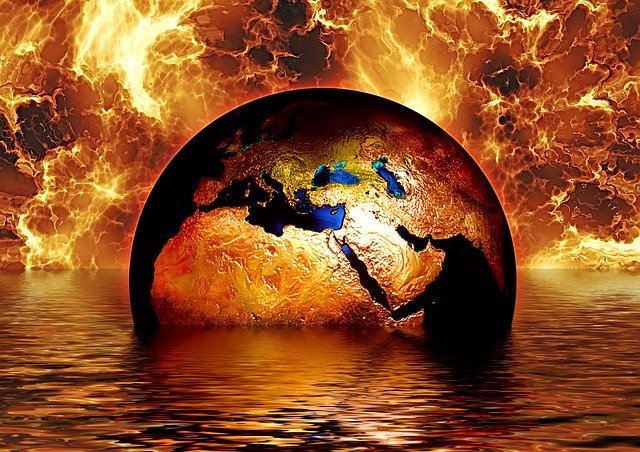Today many people will be hearing about the climate report released by the IPCC. The Intergovernmental Panel on Climate Change is the United Nations body for assessing the science related to climate change. The panel was established to provide policymakers with regular scientific assessments on climate change, its implications and potential future risks, as well as to put forward adaptation and mitigation options. Today the panel published its assessment of climate science, which has been described as “a code red for humanity” by António Guterres, the UN secretary general.
Time’s Running Out
The panel’s report hit the headlines today and once again reminded us that we have limited time in which to act in order to prevent more devastating impacts from climate change.
Our Fault
The report states that human activity is without question the cause of rapid changes to the climate, warming oceans, rising sea levels, melting ice sheets and glaciers, increasing heatwaves, floods and droughts. Many of these changes are irreversible and will afflict the planet for decades to come.
Findings
The report estimates that by burning fossil fuels and continuing deforestation, we have pushed average temperatures to being nearly 1.1C higher in the last decade when compared to pre-industrial times – the period 1850-1900.
The report shows that emissions of greenhouse gases from human activities are responsible for approximately 1.1°C of warming since 1850-1900, and finds that averaged over the next 20 years, global temperature is expected to reach or exceed 1.5°C of warming.
The report provides new estimates of the chances of crossing the global warming level of 1.5°C in the next decades, and finds that unless there are immediate, rapid and large-scale reductions in greenhouse gas emissions, limiting warming to close to 1.5°C or even 2°C will be beyond reach.
The Future
So what does the future hold? The report envisages 5 possible scenarios for the future of our planet based on what we do now.
We cut global CO2 emissions to net zero around 2050. Extreme weather is more common, but the world has dodged the worst impacts of climate change
Global CO2 emissions are cut severely, but not as fast, reaching net-zero after 2050. Temperatures stabilise around 1.8°C higher by the end of the century.
CO2 emissions hover around current levels before starting to fall mid-century, but do not reach net-zero by 2100. Temperatures rise 2.7°C by the end of the century.
Temperatures rise steadily and CO2 emissions roughly double from current levels by 2100. By the century end, average temperatures have risen by 3.6°C.
Current CO2 emissions levels roughly double by 2050. The global economy grows quickly, fuelled by exploiting fossil fuels and energy-intensive lifestyles. By 2100, the average global temperature is a scorching 4.4°C higher.
Looking at these possible outcomes it’s clear that human actions still have the potential to determine the future course of climate. The evidence is clear that CO2 is the main driver of climate change, even as other greenhouse gases and air pollutants also affect the climate.“Stabilizing the climate will require strong, rapid, and sustained reductions in greenhouse gas emissions, and reaching net zero CO2 emissions. Limiting other greenhouse gases and air pollutants, especially methane, could have benefits both for health and the climate,” said IPCC Working Group I Co-Chair Panmao Zhai.
Governments from 197 countries will meet this November in Glasgow for the latest UN climate talks, called Cop26. Will we see a shift in emphasis and policy on the back of this latest report. Or are we doomed to keep making the same mistakes. It would seem however that we may not have the time to keep making the mistake. According to Doug Parr, chief scientist at Greenpeace UK, “This is not the first generation of world leaders to be warned by scientists about the gravity of the climate crisis, but they’re the last that can afford to ignore them.
You can read/download the full report here.











